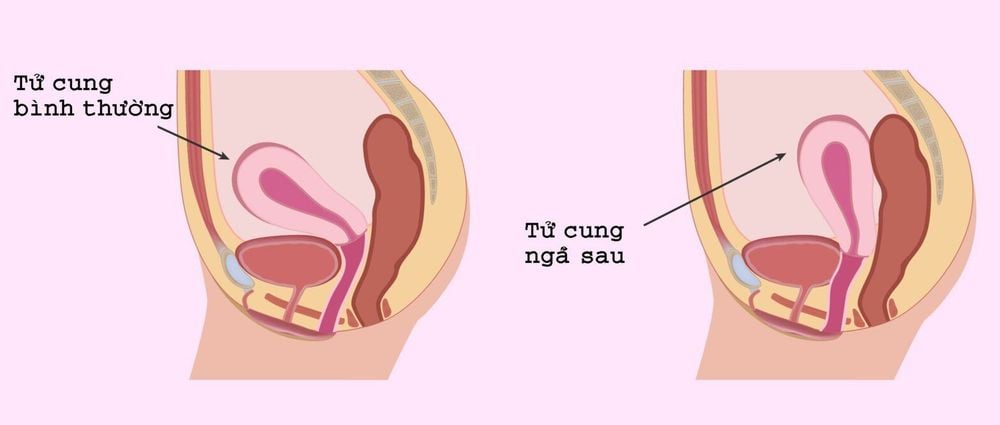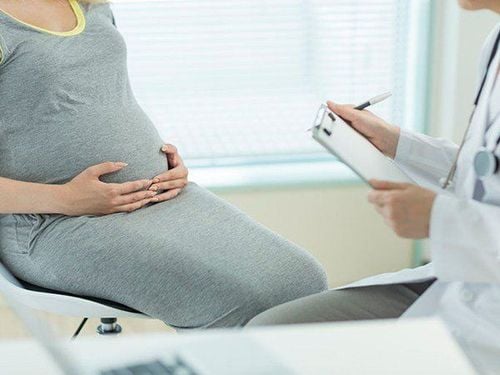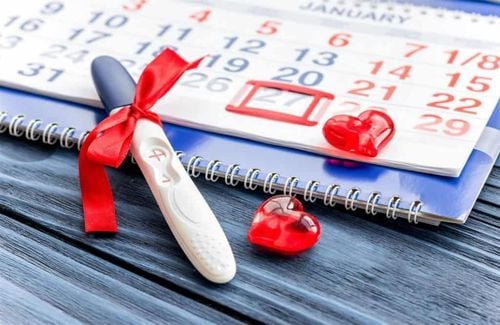This is an automatically translated article.
The article was professionally consulted by Specialist Doctor I Le Hong Lien - Department of Obstetrics and Gynecology - Vinmec Central Park International General Hospital.Women can have a retro, anterior or medial uterus, it's up to each individual and this is normal. A tilted uterus makes women worry about their ability to conceive. The following article will share what you need to know about a retroverted uterus.
1. What is a retroverted uterus?
A retroverted uterus is a condition in which the uterus leans back and leans on the rectum instead of leaning forward and leaning against the bladder.Statistics show that about 25% of women have a retroverted uterus. Therefore, a retroverted uterus may just be a natural phenomenon that, if it causes no pain or other symptoms, may not require treatment.
2. What causes the uterus to tilt back?
A retroverted uterus can be a natural phenomenon, but it can also be caused by a number of conditions. Some of the following causes can cause a woman to experience a retroverted uterus:Endometriosis: The growth of endometrial cells on the outside of the uterus can lead to a tilted uterus posteriorly, because the uterus is glued to other structures in the pelvis; Fibroids: Small noncancerous tumors can make the uterus more likely to lean back; Due to adhesions: When a scar tissue adheres the surfaces of two organs together, such as during abdominal or pelvic surgery, it can cause the uterus to stick to the rectum behind, resulting in a reclined uterus. after ; Pregnancy: Normally, the uterus is held in place by ligaments. When a woman is pregnant, these ligaments can become overstretched and cause the uterus to lean back. After giving birth, the uterus will return to its normal position, however, in some cases the uterus does not return to its original position;
3. Manifestations of retroverted uterus
Some women with a retroverted uterus have no symptoms, so they don't know they have it. On the contrary, the following symptoms may be a condition of the uterus leaning back:Vaginal pain or pain in the lower back during sex; Pain during menstruation; find it difficult to use tampons; bladder distension and frequent urination; Urinary infection;

4. Diagnosis of retroverted uterus
A retroverted uterus is usually diagnosed through an internal vaginal examination; Occasionally, a retroverted uterus can be detected on a pap test; If you have symptoms like pain during sex, your doctor may suspect a retroverted uterus and check for common causes like fibroids or endometriosis.5. The phenomenon of the uterus reclined after pregnancy
A retroverted uterus does not affect fertility and does not usually affect pregnancy. However, this condition can put more pressure on the bladder during the first trimester and make it more difficult for you to urinate or have urinary incontinence during pregnancy.By the second trimester, the uterus will widen and straighten again, usually by 10-12 weeks of pregnancy. This allows the uterus to pass through the pelvis and not to tilt back. Sometimes, the uterus cannot be raised as above, possibly because it is firmly attached to the pelvis. If the uterus does not lean forward, there is an increased risk of miscarriage, but this rarely happens. If an adherent uterus is detected early, it can be treated early and reduces or eliminates the chance of miscarriage.
If the uterus reclined after pregnancy with the following symptoms, pregnant women should see a doctor:
Frequent urinary retention; Pain in the stomach or the area near the rectum; Constipation ; Urinary incontinence; Some women with a retroverted uterus often experience back pain when preparing for delivery in the third trimester or may not be affected much.
6. Treatment of retroverted uterus
If a retroverted uterus is causing many symptoms or abnormalities, your doctor may choose to treat the following:Treating the cause of the retroverted uterus with hormone therapy for endometriosis bow; Using a pessary ring: A silicone or plastic device will be placed temporarily or permanently to help lift the uterus forward. However, this lifting ring has the potential to increase the risk of pelvic inflammatory disease. In addition, the placement of a lifting ring does not improve pain during sex but can also cause discomfort for your partner; Laparoscopic surgery: This method of treating a retroverted uterus helps to return the uterus to a position against the front of the bladder. This surgical method is quite simple and has a high success rate. In some cases, if a woman no longer wishes to become pregnant, a hysterectomy may be considered. Although a retroverted uterus usually does not cause any serious symptoms when conceiving or becoming pregnant, if you suspect or have unusual symptoms, you need to see an obstetrician and gynecologist soon to find out the cause. and prompt treatment.
Please dial HOTLINE for more information or register for an appointment HERE. Download MyVinmec app to make appointments faster and to manage your bookings easily.














